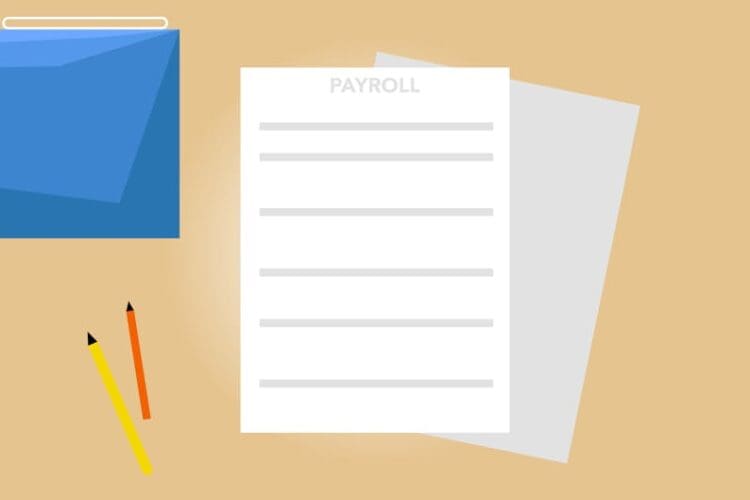
The Advantages of Switching to an Automated Payroll System
Wondering how payroll automation benefits your business? Here’s a quick glance at the main advantages:
- Saves Time: Fewer manual processes.
- Reduces Errors: Accurate calculations and proactive error management.
- Enhances Accessibility: Easy access to payroll records.
For small and medium-sized businesses, managing payroll can be a complex and time-consuming task. But with payroll automation, you not only save time, but also improve accuracy, and enhance the overall efficiency of your business operations.
According to the American Payroll Association (APA), “Manually keying anything into a system nowadays is an outdated practice. It is also time-consuming and prone to human error.”
I’m Dylan Cleppe, with over 20 years in customer service across various industries. My goal is to help businesses realize the payroll automation benefits.

In the next section, we’ll dive deeper into understanding what payroll automation entails.
Understanding Payroll Automation
Payroll automation is the process of using technology to handle payroll tasks with minimal human intervention. Instead of manually collecting, organizing, and calculating employee pay and deductions, automated systems perform these tasks efficiently and accurately.
Evolution of Payroll Automation
Payroll processes have evolved significantly from the days of paper time cards and manual calculations. Initially, payroll was a tedious and error-prone task. With the advent of Robotic Process Automation (RPA), payroll systems can now mimic human actions within digital systems. This means automated scripts and software bots handle routine tasks like data entry and inter-system communication. The modern payroll landscape is marked by cloud-based solutions and integrated software, making payroll management more efficient and reliable.
Key Components of Payroll Automation
Automated payroll systems typically include several key components:
-
Timekeeping: Automated systems collect and store employee time and attendance data. This data is used to calculate pay accurately, considering overtime, holidays, and other variables.
-
Wage Calculation: The system calculates gross pay based on hourly rates or salaries, factoring in any additional pay elements like overtime or bonuses.
-
Tax Withholding: Automated payroll software calculates and withholds the correct amounts for federal, state, and local taxes, ensuring compliance with tax laws.
-
Benefits Administration: These systems manage contributions to retirement plans, health insurance, and other employee benefits.
-
Payroll Records: Detailed records of all payroll transactions and tax withholdings are maintained, simplifying audits and tax filings.
-
Compliance: Automated systems ensure that all payroll processes comply with local, state, and federal labor and tax laws.
Real-World Benefits
Time-saving: Automated payroll eliminates the need for manual data entry and calculations, freeing up valuable time for HR and payroll staff.
Error Reduction: Automation minimizes human error by accurately collecting and calculating employee data.
Cost Efficiency: Automating payroll reduces the need for manual labor and cuts down on operational costs.
Security: Payroll data is highly sensitive. Automated systems use encryption and other security measures to protect this data, reducing the risk of loss or unauthorized access.
Employee Self-Service: Modern payroll systems often include self-service portals, allowing employees to access their pay stubs, update personal information, and manage benefits independently.
Core Benefits of Automated Payroll Systems
Automated payroll systems offer several key advantages that can transform how your business handles payroll. Let’s break down the three main payroll automation benefits: time-saving, error reduction, and cost efficiency.
Time-saving
Automated payroll systems save significant time by streamlining routine tasks.
Direct Deposits: With automated payroll, direct deposits are processed quickly and efficiently. No more waiting for paper checks or manual bank transfers. This ensures employees get paid on time, every time.
Automated Calculations: Payroll software handles complex calculations automatically. Whether it’s tax withholdings, overtime pay, or benefits deductions, the system does the math for you, reducing the need for manual input.
On-demand Pay: Some automated systems offer on-demand pay options, allowing employees to access earned wages before the official payday. This flexibility can improve employee satisfaction and financial well-being.
Error Reduction
Accuracy is critical in payroll, and automation helps minimize errors.
Accuracy: Automated systems ensure that calculations are precise. By reducing manual data entry, the risk of human error is significantly lowered. According to the American Payroll Association, manual keying is outdated and error-prone.
Compliance: Payroll software stays updated with the latest tax laws and regulations. This helps ensure that your business remains compliant with federal, state, and local tax requirements. Automated systems can generate necessary tax forms and reports, reducing the risk of penalties.
Security Enhancements: Payroll data is sensitive. Automated systems use encryption and other security measures to protect this data, reducing the risk of loss or unauthorized access.
Cost Efficiency
Automated payroll systems can also lead to substantial cost savings.
Reduced Manual Labor: Automation reduces the need for manual data entry and calculations. This frees up your HR team to focus on more strategic tasks, such as employee engagement and development.
Software Integration: Modern payroll systems can integrate with other business software, such as HR and time-tracking tools. This integration streamlines processes and reduces the need for multiple systems, saving both time and money.
Lower Operational Costs: By eliminating paper checks and reducing manual processes, automated payroll systems can lower operational costs. According to the American Productivity and Quality Center, low-performing organizations can take up to 10 days to resolve payroll errors, a costly inefficiency that automation can help avoid.
Next, we’ll discuss how payroll automation enhances HR and employee experience, including HR focus, employee self-service, and improved recruitment.
How Payroll Automation Enhances HR and Employee Experience
HR Focus
Payroll automation allows HR teams to shift their focus from repetitive tasks to more strategic efforts. Instead of spending hours on manual calculations and data entry, HR professionals can concentrate on macro tasks like employee engagement, talent management, and organizational development.
For example, automating payroll processes means HR can better manage and analyze employee performance data, leading to more informed decisions about promotions and training programs. This shift not only boosts HR productivity but also enhances overall employee management.
Employee Self-Service
One of the standout payroll automation benefits is the ability to offer employees self-service options. According to a 2020 survey by the American Payroll Association, 84% of U.S. employees have instant access to their pay and benefits information, and this expectation is growing.
Data Management: Employees can easily access and update their personal information, reducing the administrative burden on HR.
Paycheck Access: With automated payroll systems, employees can view their paystubs and tax documents online anytime, eliminating the need for paper records.
Personal Information Updates: Employees can update their contact details or bank information directly in the system, ensuring that their records are always current and accurate.
Improved Recruitment and Onboarding
Automation significantly enhances the recruitment and onboarding process, making it faster and more efficient.
Streamlined Processes: Automated systems can handle repetitive tasks like sending offer letters and collecting necessary documents, freeing up HR to focus on more critical aspects of the hiring process.
Faster Onboarding: New hires can complete their onboarding paperwork online before their first day, speeding up the process and allowing them to start contributing sooner.
Enhanced Candidate Experience: A smooth, efficient onboarding process leaves a positive first impression on new employees, increasing their satisfaction and retention rates.
By leveraging payroll automation, HR departments can focus on strategic initiatives, provide employees with valuable self-service options, and improve the overall recruitment and onboarding experience. This not only enhances the efficiency of HR operations but also contributes to a more engaged and satisfied workforce.
Next, we’ll address common concerns and questions about payroll automation, including compliance, implementation, and ROI.
Addressing Common Concerns and Questions
Compliance
One of the biggest concerns businesses have about payroll automation is compliance. Ensuring that you meet all legal requirements, tax codes, and reporting standards is crucial. Automated payroll systems excel in this area by automatically updating tax rates and regulations. This reduces the risk of non-compliance and costly penalties.
Real-time compliance monitoring is another feature offered by top payroll service providers. This allows you to address potential issues before they escalate into serious violations.
Implementation
Switching to an automated payroll system may seem daunting, but the ease of setup and comprehensive training provided by most vendors can make the transition smooth. Many payroll systems come with user-friendly interfaces and step-by-step guides to help you get started.
Support is also a key component. Reliable providers offer 24/7 customer service to assist you through the setup process and beyond. This ensures that any issues you encounter can be resolved quickly, minimizing downtime.
ROI
Investing in payroll automation offers a significant return on investment (ROI). Here’s how:
- Cost-Benefit Analysis: Automated systems reduce manual labor costs and minimize errors, which can be expensive to correct.
- Efficiency Gains: Tasks like calculating taxes, generating payslips, and producing reports are automated, saving time and reducing errors.
- Long-term Savings: With fewer errors and streamlined processes, you save on both immediate and future costs.
The Future of Payroll: Trends and Predictions
Automation Expansion
The future of payroll is all about automation expansion. Businesses are increasingly turning to automated systems to streamline operations. According to EY, automating repetitive tasks can save between 20% and 60% of baseline full-time employee costs. This isn’t just about cutting costs; it’s about making your payroll process faster and more efficient.
Automated systems can handle everything from direct deposits to tax filings. They reduce the risk of human error and ensure compliance with ever-changing tax laws. When businesses must do more with less, automation is not just a trend; it’s a necessity.
AI Integration
Artificial Intelligence (AI) is set to revolutionize payroll systems. Unlike Robotic Process Automation (RPA), which follows predefined rules, AI can make decisions based on data analysis. This means AI can handle more complex tasks, such as predicting payroll trends and identifying discrepancies.
AI can also enhance employee experience. For example, AI-driven chatbots can answer payroll-related questions in real-time, reducing the load on HR departments. The Global Payroll Management Institute initially doubted RPA’s ability to handle complex payroll tasks, but advancements in AI are changing the game.
Cloud-Based Solutions
Cloud-based payroll solutions offer flexibility and scalability that traditional systems can’t match. These platforms allow businesses to access payroll data from anywhere, making it easier to manage remote teams. They also offer robust security features, like encryption and firewalls, to keep sensitive data safe.
According to the American Payroll Association, 84% of U.S. employees expect instant access to their pay information. Cloud-based solutions make this possible, offering self-service options that improve transparency and employee satisfaction.
Automation, AI, and cloud-based solutions are not just trends; they are the future of payroll. By adopting these technologies, businesses can stay ahead of the curve and ensure their payroll processes are efficient, accurate, and secure.
Next, we’ll explore how these advancements enhance HR and employee experience, making your business more attractive to top talent.
Conclusion
Switching to an automated payroll system offers numerous benefits, from saving time to reducing errors and costs. As we’ve seen, these systems also enhance HR functions and improve the overall employee experience. But how do you make the transition smoothly? That’s where we come in.
At OneStop Northwest, we specialize in making your shift to payroll automation seamless and hassle-free. Our team of experts will guide you through every step of the process, from selecting the right software to integrating it with your existing systems.
Next Steps:
- Evaluate Your Needs: Assess your current payroll process to identify pain points and areas for improvement.
- Consult with Experts: Reach out to our team to discuss your specific requirements and get personalized recommendations.
- See It in Action: Schedule a live demo to see how our payroll automation solutions can transform your business.
Contact Information:
Ready to make the switch? Contact us today to learn more about how OneStop Northwest can help you automate your payroll system and enhance your business operations.
Learn more about our payroll automation services and take the first step towards a more efficient, accurate, and secure payroll process.
Automation is the future, and the future is now. Don’t get left behind. Join us at OneStop Northwest and experience the benefits of payroll automation firsthand.





